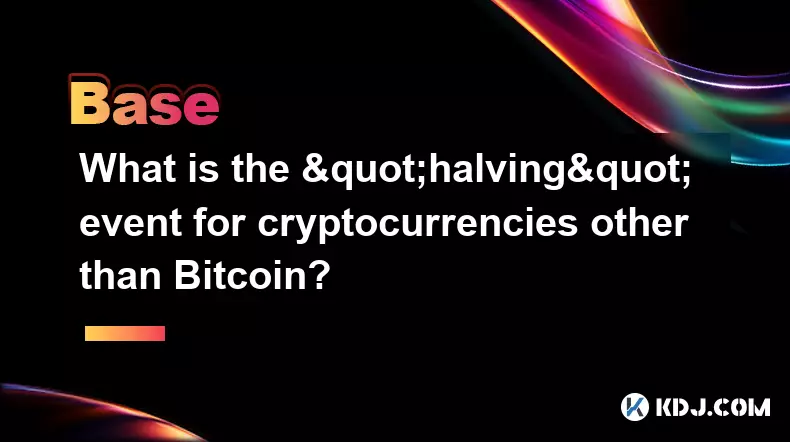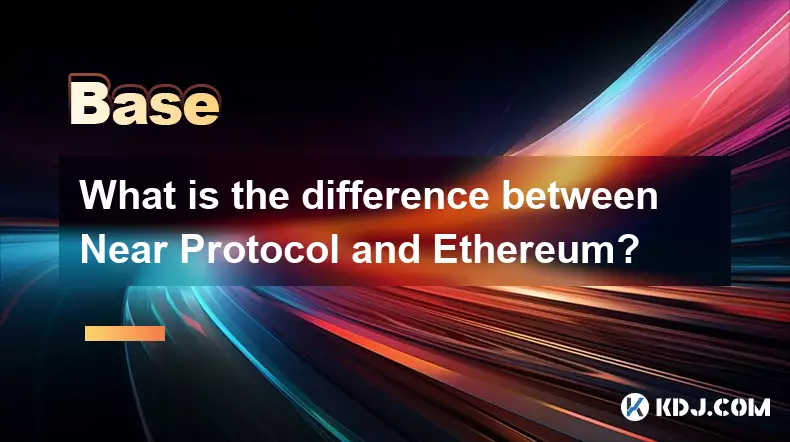-
 bitcoin
bitcoin $112139.774561 USD
-1.82% -
 ethereum
ethereum $3970.329568 USD
-3.85% -
 tether
tether $1.000078 USD
0.01% -
 xrp
xrp $2.611653 USD
-1.08% -
 bnb
bnb $1099.982737 USD
-3.67% -
 solana
solana $193.702075 USD
-3.33% -
 usd-coin
usd-coin $0.999832 USD
0.00% -
 dogecoin
dogecoin $0.193302 USD
-3.68% -
 tron
tron $0.294800 USD
-1.45% -
 cardano
cardano $0.642524 USD
-3.89% -
 hyperliquid
hyperliquid $47.524848 USD
1.27% -
 chainlink
chainlink $17.842256 USD
-2.41% -
 bitcoin-cash
bitcoin-cash $561.265025 USD
1.01% -
 stellar
stellar $0.317292 USD
-2.07% -
 ethena-usde
ethena-usde $0.999303 USD
0.01%
What is the utility of a governance token?
Governance tokens empower holders to shape protocol upgrades, treasury decisions, and security responses, fostering decentralized, community-driven ecosystems.
Oct 19, 2025 at 02:00 am

Understanding the Role of Governance Tokens in Decentralized Ecosystems
1. Governance tokens grant holders the ability to influence decisions within a blockchain protocol or decentralized organization. These decisions can include changes to smart contract parameters, treasury allocations, and upgrades to the network infrastructure. Unlike traditional corporate voting structures, governance tokens distribute authority across a wide user base, promoting decentralization.
2. Token-based voting ensures that individuals with greater stake in the ecosystem carry more weight in decision-making processes. This aligns incentives, as those who hold more tokens have a vested interest in the long-term success of the project. Voting power is typically proportional to the number of tokens held, though some systems implement mechanisms like quadratic voting to reduce centralization risks.
3. Governance proposals are often submitted by community members and then voted on by token holders. The process is usually transparent and recorded on-chain, allowing anyone to verify participation and outcomes. Successful proposals trigger automated execution through smart contracts, reducing reliance on centralized teams.
4. Some protocols require users to lock or stake their governance tokens to participate in voting. This design discourages short-term speculation and encourages long-term engagement. Staking also introduces economic consequences for malicious behavior, as bad actors risk losing value if their actions harm the network.
Governance Tokens Drive Protocol Upgrades and Security
1. When a blockchain network needs to evolve—such as adjusting fee models, integrating new features, or responding to security threats—governance tokens enable rapid coordination without centralized control. This adaptability strengthens resilience against both technical challenges and competitive pressures.
2. In cases where vulnerabilities are discovered, token holders can vote on emergency upgrades or fund bounties for fixes. This collective response mechanism enhances security by leveraging the wisdom and resources of the entire community.
3. Governance tokens allow decentralized autonomous organizations (DAOs) to manage multi-signature wallets and allocate funds based on community consensus. Treasury management becomes a shared responsibility, increasing accountability and reducing single points of failure.
4. Protocols like MakerDAO use governance tokens (MKR) to maintain system stability during market volatility. Holders vote on risk parameters, collateral types, and debt auctions, ensuring the protocol remains solvent under stress conditions.
Monetization and Incentive Structures Around Governance
1. While governance tokens may not always generate direct revenue, they often appreciate in value when effective decisions improve the underlying platform. Positive governance outcomes can increase demand for the native ecosystem, benefiting all stakeholders.
2. Some projects distribute a portion of transaction fees or protocol revenues to governance token stakers. This creates an income stream tied to participation, reinforcing the incentive to actively engage in governance.
3. Liquidity providers and yield farmers frequently receive governance tokens as rewards. This distribution model bootstraps user adoption and ensures early contributors gain influence over future development.
4. Third-party platforms build tools for analyzing governance proposals, tracking voter sentiment, and simulating economic impacts. These services enhance transparency and lower the barrier to informed participation.
Frequently Asked Questions
Can governance tokens be used outside of voting?Yes, certain protocols allow governance tokens to serve additional functions such as paying reduced fees, accessing premium features, or acting as collateral in lending markets. Their utility extends beyond voting depending on the design of the ecosystem.
Do all DeFi projects issue governance tokens?No, not all decentralized finance projects utilize governance tokens. Some operate with centralized decision-making initially, while others adopt gradual decentralization paths. The choice depends on the team’s vision and regulatory considerations.
How are governance tokens distributed?Distribution methods vary widely. Common approaches include airdrops to early users, emissions through liquidity mining, allocations to founders and investors with vesting schedules, and public sales. Fair launch models aim to minimize pre-mines and promote equitable access.
What happens if a governance proposal fails?A failed proposal does not execute, and the status quo remains unchanged. Proponents may revise and resubmit the idea after addressing concerns raised during discussion. Failed votes still contribute to community discourse and help shape future initiatives.
Disclaimer:info@kdj.com
The information provided is not trading advice. kdj.com does not assume any responsibility for any investments made based on the information provided in this article. Cryptocurrencies are highly volatile and it is highly recommended that you invest with caution after thorough research!
If you believe that the content used on this website infringes your copyright, please contact us immediately (info@kdj.com) and we will delete it promptly.
- Essex Post Office, 5p Coins, and King Charles: A Royal Mint Revelation!
- 2025-10-23 10:30:16
- Waymo's Newark Airport AV Tests: Alphabet's AI Gamble Pays Off?
- 2025-10-23 10:30:16
- King Charles 5p Coins: A Royal Flush in Your Pocket?
- 2025-10-23 10:35:18
- Solana, Crypto Advisory, and Forward Industries: A New York Minute on the Future of Finance
- 2025-10-23 08:51:22
- MAGACOIN: Ethereum Whales Dive into the Hottest Presale of 2025
- 2025-10-23 08:51:22
- Kadena's End of the Road? KDA Token Plummets Amid Project Abandonment
- 2025-10-23 08:55:34
Related knowledge

How do decentralized identity (DID) solutions work?
Oct 14,2025 at 11:36pm
Understanding Decentralized Identity in the Blockchain Ecosystem1. Decentralized identity (DID) solutions are built on blockchain networks, allowing i...

What is the "halving" event for cryptocurrencies other than Bitcoin?
Oct 25,2025 at 12:19pm
Decentralized Exchanges Gain Momentum in 20241. Decentralized exchanges (DEXs) have seen a surge in trading volume as users prioritize control over th...

What is the difference between Near Protocol and Ethereum?
Oct 15,2025 at 08:01am
Near Protocol and Ethereum: Core Architectural Differences1. Near Protocol operates on a sharded blockchain architecture known as Nightshade, which al...

What does it mean for code to be "open source" in crypto?
Oct 12,2025 at 01:54pm
Understanding Open Source in the Cryptocurrency Ecosystem1. In the context of cryptocurrency, open source refers to software whose code is publicly ac...

What is the purpose of a "testnet"?
Oct 12,2025 at 09:01am
Understanding the Role of Testnets in Blockchain Development1. A testnet serves as a parallel version of a blockchain network, designed specifically f...

How to avoid phishing scams in crypto?
Oct 13,2025 at 06:18pm
Understanding Common Crypto Phishing Tactics1. Cybercriminals frequently use fake websites that mirror legitimate crypto exchanges or wallet platforms...

How do decentralized identity (DID) solutions work?
Oct 14,2025 at 11:36pm
Understanding Decentralized Identity in the Blockchain Ecosystem1. Decentralized identity (DID) solutions are built on blockchain networks, allowing i...

What is the "halving" event for cryptocurrencies other than Bitcoin?
Oct 25,2025 at 12:19pm
Decentralized Exchanges Gain Momentum in 20241. Decentralized exchanges (DEXs) have seen a surge in trading volume as users prioritize control over th...

What is the difference between Near Protocol and Ethereum?
Oct 15,2025 at 08:01am
Near Protocol and Ethereum: Core Architectural Differences1. Near Protocol operates on a sharded blockchain architecture known as Nightshade, which al...

What does it mean for code to be "open source" in crypto?
Oct 12,2025 at 01:54pm
Understanding Open Source in the Cryptocurrency Ecosystem1. In the context of cryptocurrency, open source refers to software whose code is publicly ac...

What is the purpose of a "testnet"?
Oct 12,2025 at 09:01am
Understanding the Role of Testnets in Blockchain Development1. A testnet serves as a parallel version of a blockchain network, designed specifically f...

How to avoid phishing scams in crypto?
Oct 13,2025 at 06:18pm
Understanding Common Crypto Phishing Tactics1. Cybercriminals frequently use fake websites that mirror legitimate crypto exchanges or wallet platforms...
See all articles










































































